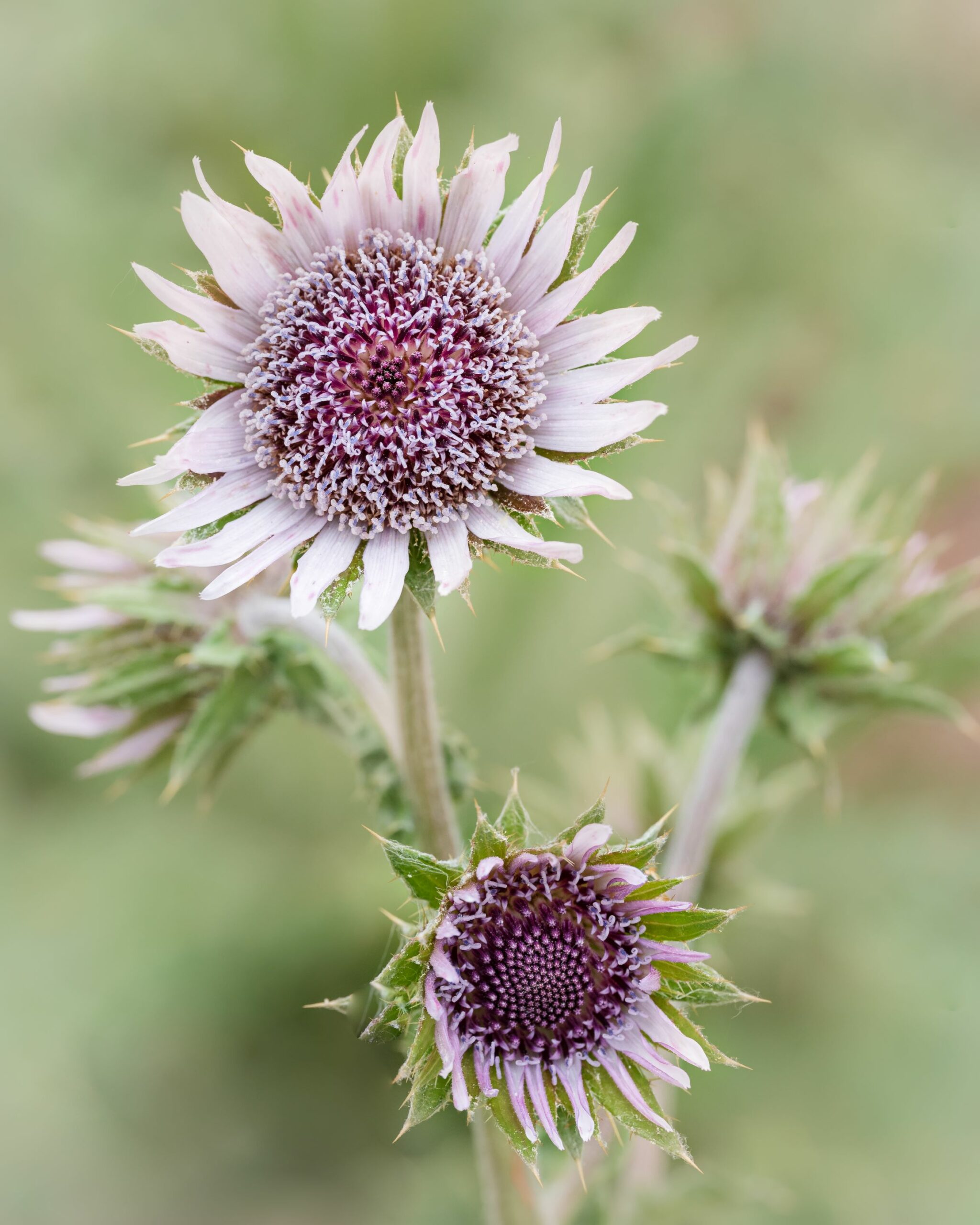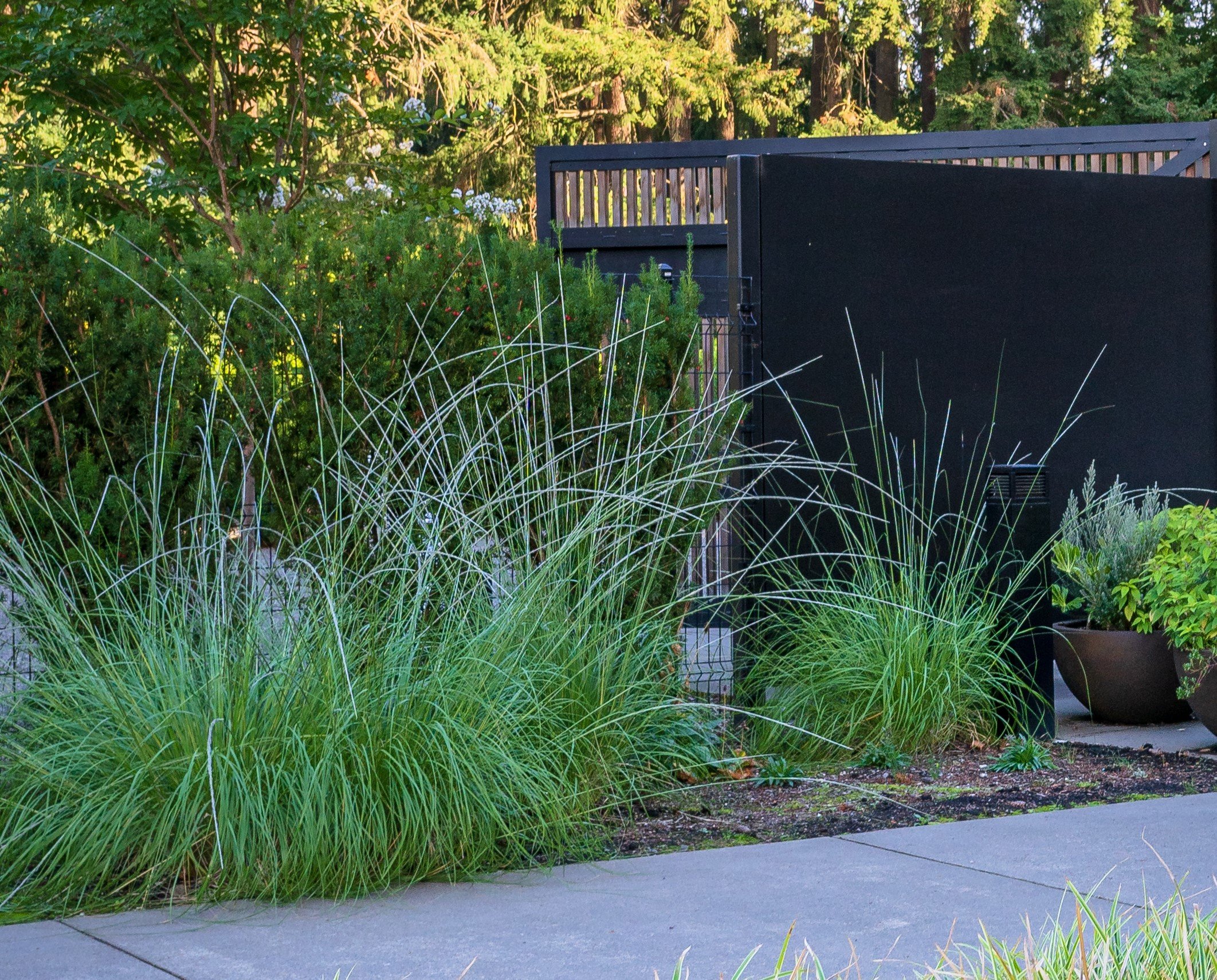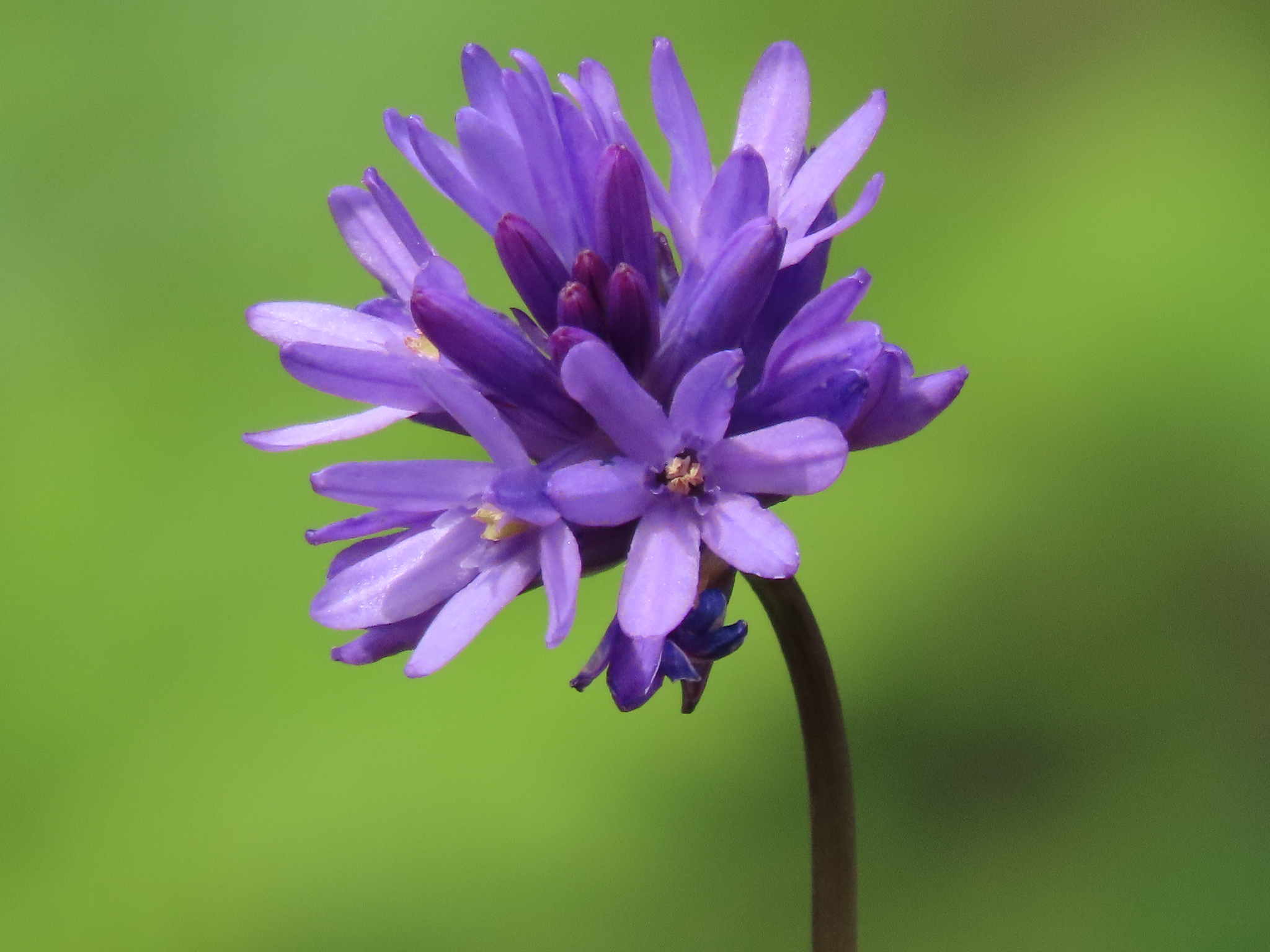Favorite Plants of
Pacific Plant People
Member Profile
Adam Hart

Leach Botanical Garden is major hub for outdoor activities for the surrounding diverse community. The garden features a diverse collection of over 2,000 hybrids, cultivars, native and non-native plants, including alpines, medicinal herbs, rock garden plants, camellias, and 40 genera and over 125 species of ferns. Many are labeled. The property is divided by Johnson Creek and most of the land is on an incline. A self-guided tour winds along trails with views of firs, ferns, and wildflowers

Berkheya purpurea "Purple berkheya"

Muhlenbergia rigens "Deergrass"
Dichelostemma congestum "Ookow"
Natives for Habitat
Plant Family
Asparagaceae
Genus
Dichelostemma
Species
Dichelostemma congestum "Ookow"
Dichelostemma congestum is a species of flowering plant known by the common name ookow or fork-toothed ookow. It is native to California, Oregon and Washington. Its tall, thin, naked stem is topped with an inflorescence packed densely with six to 15 flowers, each about a centimeter wide and long, with usually six petal-like lobes in shades of bright purple.

Water Use
Drought Loving once Established
Conditions When It Thrives
Needs full sun to reliably flower and is highly adaptable to different soil types and conditions. Drought tolerant once established. Dotted throughout the rock garden at Leach Botanical Garden and doing wonderfully.
Ecosystem Services
Loved by hummingbirds, bees, and butterflies
Native To
Native to Portland and the surrounding Willamette Valley
Geographic Range
Full sun, dry to moist hills and meadows
Availability
Fairly easy to find at places that specialize in native plants
Height & Habit
Flowers in tight clusters atop a nearly 2ft stem with grassy foliage below
Special Features
Will naturalize to form colonies over time. An ideal long-lasting cut flower as well.
The bulbs are edible and are a traditional food crop of Native Americans
Why They Love It
Every year when these blooms I’m astounded by the beautiful clear blue-purple color that mixes perfectly in with other prairie/meadow plants.
Seasonal Appearance/Dormancy
Spring ephemeral with flowers and foliage appearing late spring to early summer then disappearing after flowering
Advice
Berkheya purpurea "Purple berkheya"
Drought Resilient
Plant Family
Asteraceae
Genus
Berkheya
Species
Berkheya purpurea "Purple berkheya"
Berkheya purpurea (Purple berkheya; syn. Stobaea purpurea DC) is a perennial member of the subfamily (Arctotideae) of the family Asteraceae of flowering plants. Like most members of its genus, Berkheya, it is native to southern Africa.

Water Use
Low Water, Drought-loving
Conditions When It Thrives
Requires full sun and good drainage. Loves rich soils so a healthy dose of compost will help to establish and allow the plant to succeed.
Ecosystem Services
Absolutely covered in bees all season long. One of the most popular pollinators in our garden.
Native To
South Africa
Geographic Range
Hardy to zone 7, possibly 6 if sheltered. Otherwise fairly adaptable.
Availability
Quite uncommon but seeds are available online
Height & Habit
Incredibly spiny rosettes of leaves give way to 3ft flower stalks covered in multiple flowers of light lavender with dark purple disk florets
Special Features
Will certainly deter unwanted guests, including moderate deer resistant. Flowers work well as an unusual and unexpected cut flower.
Looks like any common thistle when young so careful not to weed it out. In our garden, it seeds around readily so be warned if you want a well-behaved plant.
Why They Love It
It’s so unusual to see a thistle with profuse lavender sunflowers from summer through fall. It grabs everyone’s attention as they pass by, especially pollinators!
Seasonal Appearance/Dormancy
New growth in spring of thorny green leaves with wonderfully silver fuzzy undersides. Profusely blooms all summer and fall until it goes dormant for the winter.
Advice
Deadheading encourages more blooms, but I’m a big fan of the prickly seedheads and boy does it produce a ton of seeds!
Muhlenbergia rigens "Deergrass"
Drought Resilient
Plant Family
Poaceae
Genus
Muhlenbergia
Species
Muhlenbergia rigens "Deergrass"
Muhlenbergia rigens, commonly known as deergrass, is a warm season perennial bunchgrass. It is found in sandy or well-drained soils below 7,000 feet (2,100 m) in elevation in the Southwestern United States and parts of Mexico.

Water Use
Low Water, Drought Tolerant
Conditions When It Thrives
Full sun to light shade, can handle more shade but less vigorous
Ecosystem Services
Bird seed, erosion prevention and streambank remediation due to strong root system, overwintering host for butterflies, moths, and ladybugs
Native To
Southwest US and Mexico
Geographic Range
Very adaptable: grassland, riparian, chaparral, mixed conifer, and oak woodland
Availability
Moderately uncommon in the Pacific Northwest, but becoming more available
Height & Habit
Dense tufted foliage. Leaves to 3ft, arching flower stalks to 5 ft
Special Features
Ideal for xeriscaping and has high salt tolerance
Seed stalks were used by Native Americans for basketry
Why They Love It
This grass was incredibly quick to establish and during an exceptionally tough summer, never showed any sign of stress. By the second year was already at its mature size and immediately we started getting questions about it. Rather unassuming until in bloom, once the flower stalks appear it becomes something else entirely. The stalks are long and arching with a silver tinge to them, which creates such a unique architectural statement, especially when in mass.
Seasonal Appearance/Dormancy
Evergreen, though goes off-color in winter
Advice
So many benefits to the ecosystem, easy care, adaptable, and stunning when in bloom. What’s not to love!
Dichelostemma congestum "Ookow"
Natives for Habitat
Plant Family
Asparagaceae
Genus
Dichelostemma
Species
Dichelostemma congestum "Ookow"
Dichelostemma congestum is a species of flowering plant known by the common name ookow or fork-toothed ookow. It is native to California, Oregon and Washington. Its tall, thin, naked stem is topped with an inflorescence packed densely with six to 15 flowers, each about a centimeter wide and long, with usually six petal-like lobes in shades of bright purple.

Water Use
Drought Loving once Established
Conditions When It Thrives
Needs full sun to reliably flower and is highly adaptable to different soil types and conditions. Drought tolerant once established. Dotted throughout the rock garden at Leach Botanical Garden and doing wonderfully.
Ecosystem Services
Loved by hummingbirds, bees, and butterflies
Native To
Native to Portland and the surrounding Willamette Valley
Geographic Range
Full sun, dry to moist hills and meadows
Availability
Fairly easy to find at places that specialize in native plants
Height & Habit
Flowers in tight clusters atop a nearly 2ft stem with grassy foliage below
Special Features
Will naturalize to form colonies over time. An ideal long-lasting cut flower as well.
The bulbs are edible and are a traditional food crop of Native Americans
Why They Love It
Every year when these blooms I’m astounded by the beautiful clear blue-purple color that mixes perfectly in with other prairie/meadow plants.
Seasonal Appearance/Dormancy
Spring ephemeral with flowers and foliage appearing late spring to early summer then disappearing after flowering
Advice
Berkheya purpurea "Purple berkheya"
Drought Resilient
Plant Family
Asteraceae
Genus
Berkheya
Species
Berkheya purpurea "Purple berkheya"
Berkheya purpurea (Purple berkheya; syn. Stobaea purpurea DC) is a perennial member of the subfamily (Arctotideae) of the family Asteraceae of flowering plants. Like most members of its genus, Berkheya, it is native to southern Africa.

Water Use
Low Water, Drought-loving
Conditions When It Thrives
Requires full sun and good drainage. Loves rich soils so a healthy dose of compost will help to establish and allow the plant to succeed.
Ecosystem Services
Absolutely covered in bees all season long. One of the most popular pollinators in our garden.
Native To
South Africa
Geographic Range
Hardy to zone 7, possibly 6 if sheltered. Otherwise fairly adaptable.
Availability
Quite uncommon but seeds are available online
Height & Habit
Incredibly spiny rosettes of leaves give way to 3ft flower stalks covered in multiple flowers of light lavender with dark purple disk florets
Special Features
Will certainly deter unwanted guests, including moderate deer resistant. Flowers work well as an unusual and unexpected cut flower.
Looks like any common thistle when young so careful not to weed it out. In our garden, it seeds around readily so be warned if you want a well-behaved plant.
Why They Love It
It’s so unusual to see a thistle with profuse lavender sunflowers from summer through fall. It grabs everyone’s attention as they pass by, especially pollinators!
Seasonal Appearance/Dormancy
New growth in spring of thorny green leaves with wonderfully silver fuzzy undersides. Profusely blooms all summer and fall until it goes dormant for the winter.
Advice
Deadheading encourages more blooms, but I’m a big fan of the prickly seedheads and boy does it produce a ton of seeds!
Muhlenbergia rigens "Deergrass"
Drought Resilient
Plant Family
Poaceae
Genus
Muhlenbergia
Species
Muhlenbergia rigens "Deergrass"
Muhlenbergia rigens, commonly known as deergrass, is a warm season perennial bunchgrass. It is found in sandy or well-drained soils below 7,000 feet (2,100 m) in elevation in the Southwestern United States and parts of Mexico.

Water Use
Low Water, Drought Tolerant
Conditions When It Thrives
Full sun to light shade, can handle more shade but less vigorous
Ecosystem Services
Bird seed, erosion prevention and streambank remediation due to strong root system, overwintering host for butterflies, moths, and ladybugs
Native To
Southwest US and Mexico
Geographic Range
Very adaptable: grassland, riparian, chaparral, mixed conifer, and oak woodland
Availability
Moderately uncommon in the Pacific Northwest, but becoming more available
Height & Habit
Dense tufted foliage. Leaves to 3ft, arching flower stalks to 5 ft
Special Features
Ideal for xeriscaping and has high salt tolerance
Seed stalks were used by Native Americans for basketry
Why They Love It
This grass was incredibly quick to establish and during an exceptionally tough summer, never showed any sign of stress. By the second year was already at its mature size and immediately we started getting questions about it. Rather unassuming until in bloom, once the flower stalks appear it becomes something else entirely. The stalks are long and arching with a silver tinge to them, which creates such a unique architectural statement, especially when in mass.
Seasonal Appearance/Dormancy
Evergreen, though goes off-color in winter
Advice
So many benefits to the ecosystem, easy care, adaptable, and stunning when in bloom. What’s not to love!
